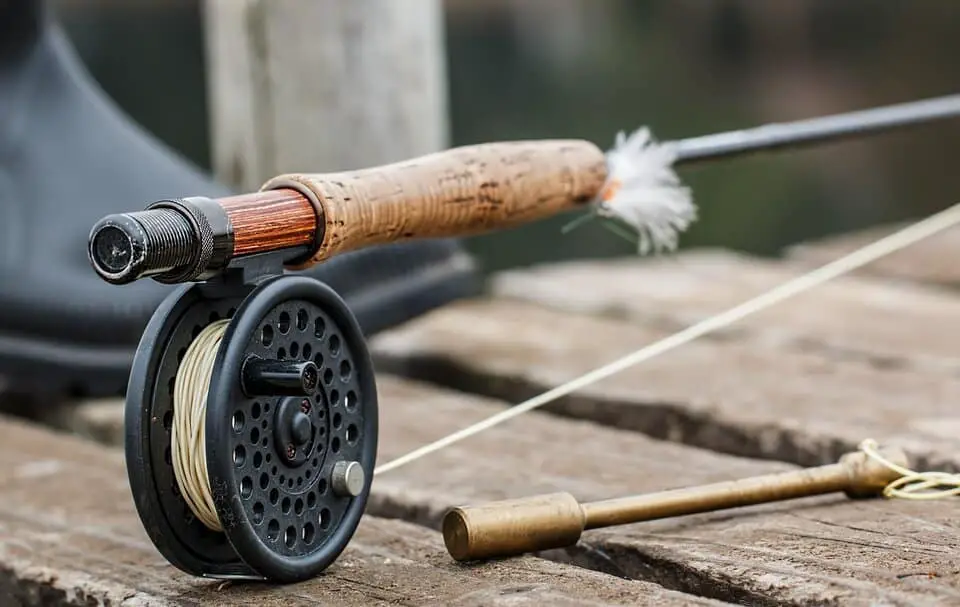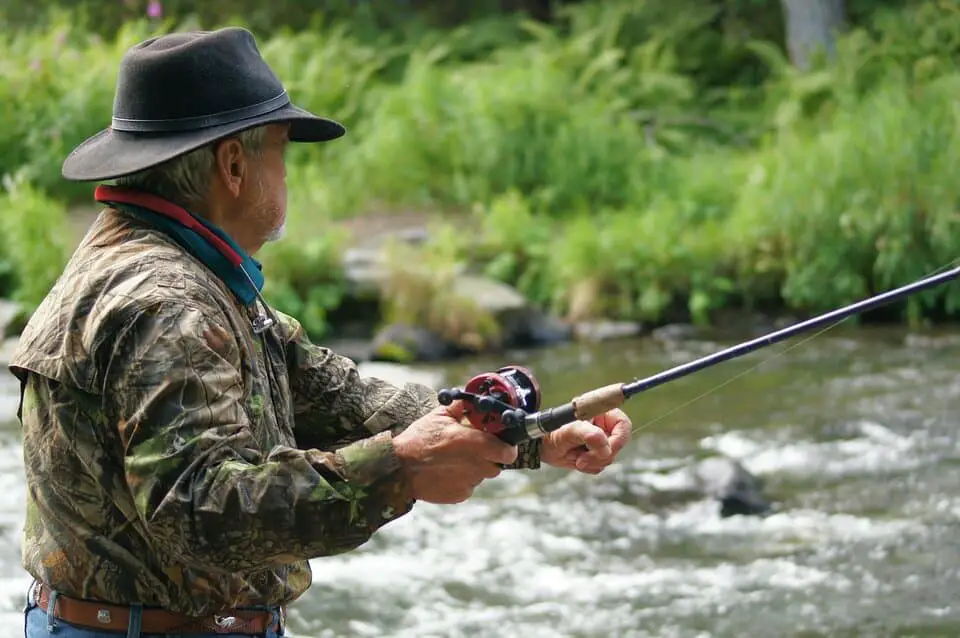Choosing the right fly rod can seem like a daunting task as you stand in front of twenty different fly rods that look identical. Different prices, weights, pieces, and casting styles all need to be taken into consideration. The most important factor in buying a fly rod is undoubtedly the weight.
So before you spend a week’s salary on your new favorite trout rod, understand what the weight means and therefore what the best fly rod weight will be for trout fishing.
What Does Weight Mean in Fly Rods?
To put it simply, the weight of the fly rod means its overall strength. The smaller the number, the weaker the rod. It will appear flimsier and have more whip. Fly rods range from 2 to 14 weight and are often expressed as “WT.” Take into consideration the length of the rod.
A short rod with a lower weight will have the same action as a longer rod with a higher weight.
This is an important fly fishing fact that not enough beginner fly fishermen understand. For example, you could use a 7-foot 4 weight and an 8-foot 5 weight interchangeably.
Not only is the species you are targeting important for deciding what weight you should use, but the size of the fly should also be taken into account.

Small River Brook Trout
Brook trout are arguably the prettiest species of trout. While wild river brooks rarely grow to be over 15 inches, stocked brooks that live in lakes can grow much larger. If you decide to chase the ever-elusive river brook trout, give the 3-weight a try.
A 3-weight paired with a weight-forward floating fly line is a perfect setup to catch brook trout on topwater. Not to say that larger rods won’t work for brook trout, but you will lose quite a few fish on the hook set. Since brook trout are small and won’t put up much of a fight, the 3-weight will provide you with a lot of action while landing this fish.
However, if you manage to hook into a large fish different from your target species, good luck trying to land it. Your best option then is to tighten your drag all the way down, point your rod tip at the fish, and break your line.
Retying a $3 fly is a lot less painful than buying another $300 rod.
Rainbow, Brown, and Cutthroat Trout
The big three of the trout world, rainbow, brown, and cutthroat, are the most popular trout targeted in North America. These three species average around 16 inches but can grow much larger if food is ample and pressure is low.
With this being said, your rod will need a little more backbone than it did with the brook trout.
A longer, 5, or 6 weight fly rod is most used for these trout. Often, you can find a rod with a weight between 5 and 6. It will be expressed as “5-6 WT” on the rod. A 5 or 6 weight fly rod can do everything from land dry flies silently on the top of the water to pushing heavy streamers like Clouser minnows into a strong headwind.
Again, paired with a weight forward, floating fly line will be the ticket when you are targeting these beautiful trophies.
Steelhead or Stocked Trout
While some anglers don’t consider a steelhead a trout, they most definitely deserve a place at the table. A steelhead is a rainbow trout that, for whatever reason, leaves freshwater to live in saltwater, imitating the life of a salmon, except it doesn’t die after it spawns.
With more food availability, they grow much larger than their freshwater brothers and sisters. It’s common for steelhead to grow 28-30 inches, making them much stronger than other trout.
An 8-weight rod should suffice for wild steelhead. If you are in an area known for growing trophy-sized steelhead, don’t hesitate to bring a 10-weight just in case.
The same rule applies to those targeting stocked trout. These fish do not fight the same as wild trout. Wild trout will come straight to the top of the water and usually try to fling the fly out of its mouth, while stocked trout tend to want to dive as deep as they can. If you have the drag on the reel set correctly, you might even forget that you have a trout hooked when trying to land it.
Why Fly Rod Weight Matters to the Fish
We often only consider ourselves when it comes to fish. The mindset “if I just catch and release it, it will be fine” is a mindset that we should probably change. Of course, catch and release fishing is ethical and sustainable even in fisheries that have a closed season for taking.
There are things we can do to better the odds that the trout you landed will survive. All species of trout are very sensitive to water temperature and stress. Many rivers in the western portion of North America have what is called a Hoot Owl Restriction.
This is when fishing can only be done in between certain hours to reduce the stress of the fish. Fighting a fish in warmer-than-usual water temperatures can be very hazardous to trout.
That is why you shouldn’t attempt to fight a 20-inch rainbow trout with a 3- weight rod. You can land the fish without any problems, but you will be fighting the fish longer than it should, which increases stress.
On the contrary, fighting a small fish with a heavier rod can cause damage to their lips and jaws. Many lakes and streams already have rules that restrict the use of barbed hooks. This is done to make sure the fish is released unharmed.
The heavier weight rod lacks the sensitivity needed to ensure that the mouth of the fish remains healthy.

Don’t be afraid to try out different weight rods for trout. What works for you might not work for someone else. So, the next time you’re in the fly shop looking for a new rig, remember that the species, fly size, and personal preference are all you need to make a decision.
